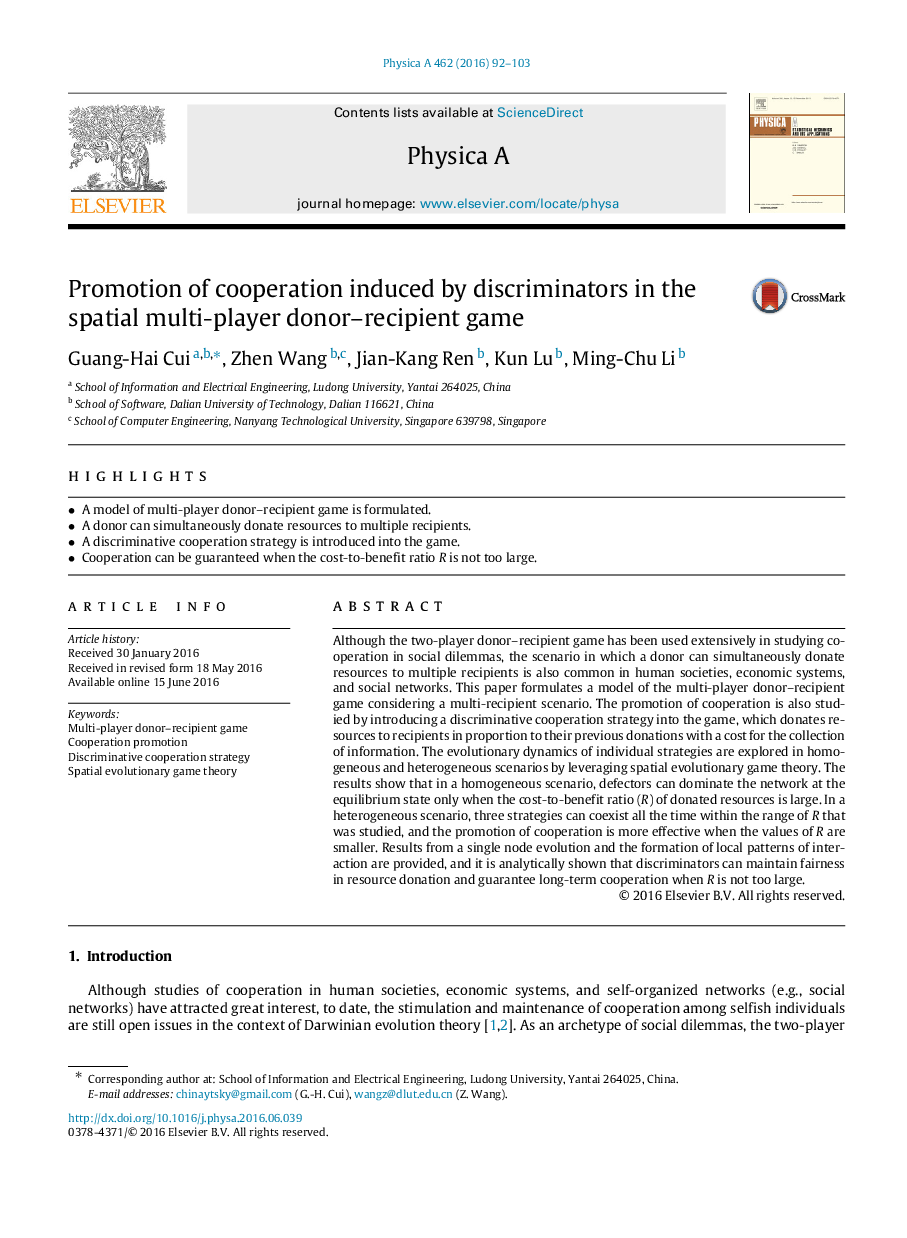| Article ID | Journal | Published Year | Pages | File Type |
|---|---|---|---|---|
| 7376992 | Physica A: Statistical Mechanics and its Applications | 2016 | 12 Pages |
Abstract
Although the two-player donor-recipient game has been used extensively in studying cooperation in social dilemmas, the scenario in which a donor can simultaneously donate resources to multiple recipients is also common in human societies, economic systems, and social networks. This paper formulates a model of the multi-player donor-recipient game considering a multi-recipient scenario. The promotion of cooperation is also studied by introducing a discriminative cooperation strategy into the game, which donates resources to recipients in proportion to their previous donations with a cost for the collection of information. The evolutionary dynamics of individual strategies are explored in homogeneous and heterogeneous scenarios by leveraging spatial evolutionary game theory. The results show that in a homogeneous scenario, defectors can dominate the network at the equilibrium state only when the cost-to-benefit ratio (R) of donated resources is large. In a heterogeneous scenario, three strategies can coexist all the time within the range of R that was studied, and the promotion of cooperation is more effective when the values of R are smaller. Results from a single node evolution and the formation of local patterns of interaction are provided, and it is analytically shown that discriminators can maintain fairness in resource donation and guarantee long-term cooperation when R is not too large.
Keywords
Related Topics
Physical Sciences and Engineering
Mathematics
Mathematical Physics
Authors
Guang-Hai Cui, Zhen Wang, Jian-Kang Ren, Kun Lu, Ming-Chu Li,
